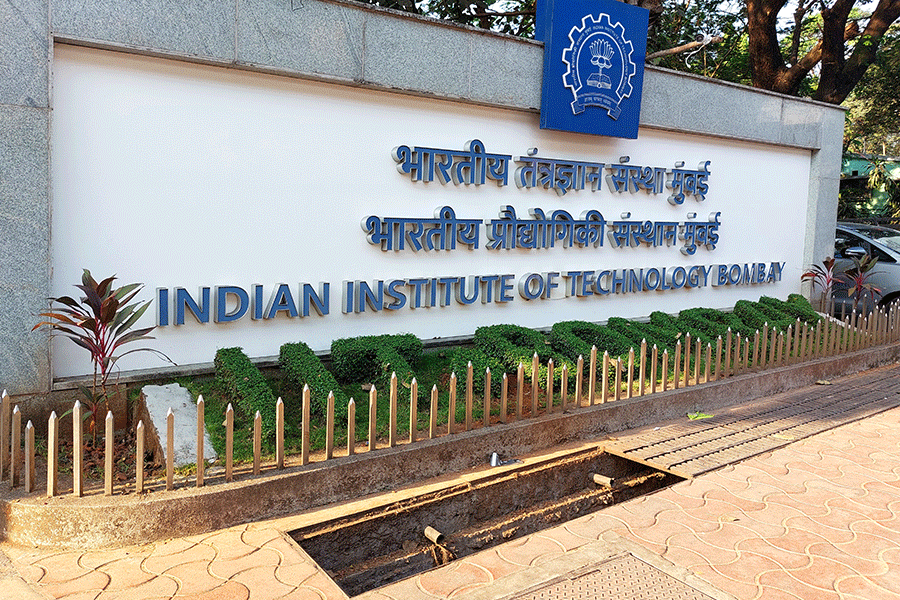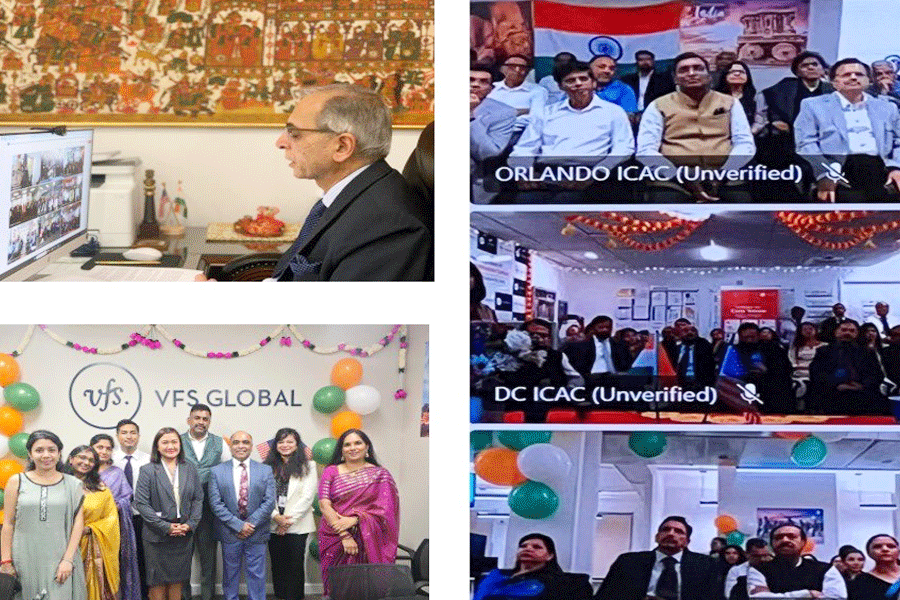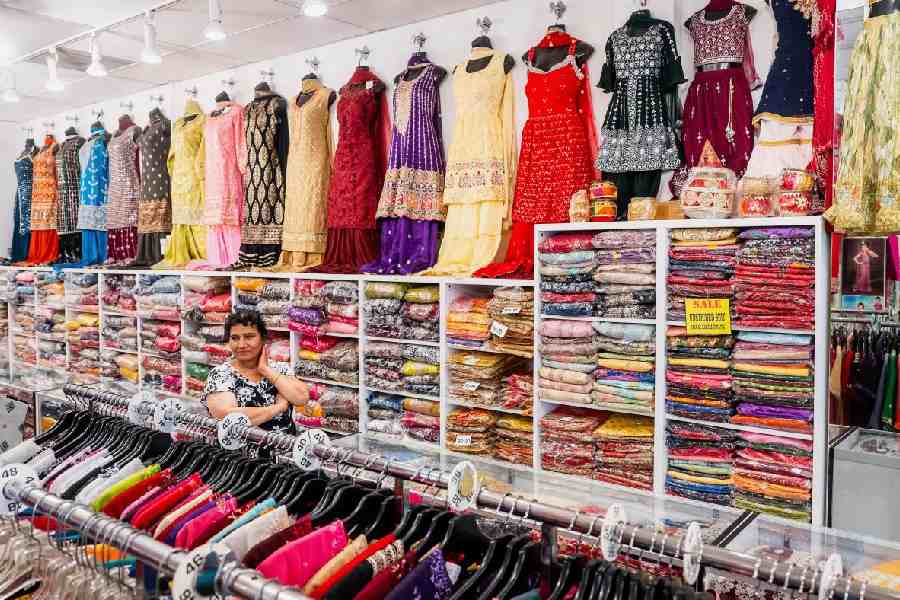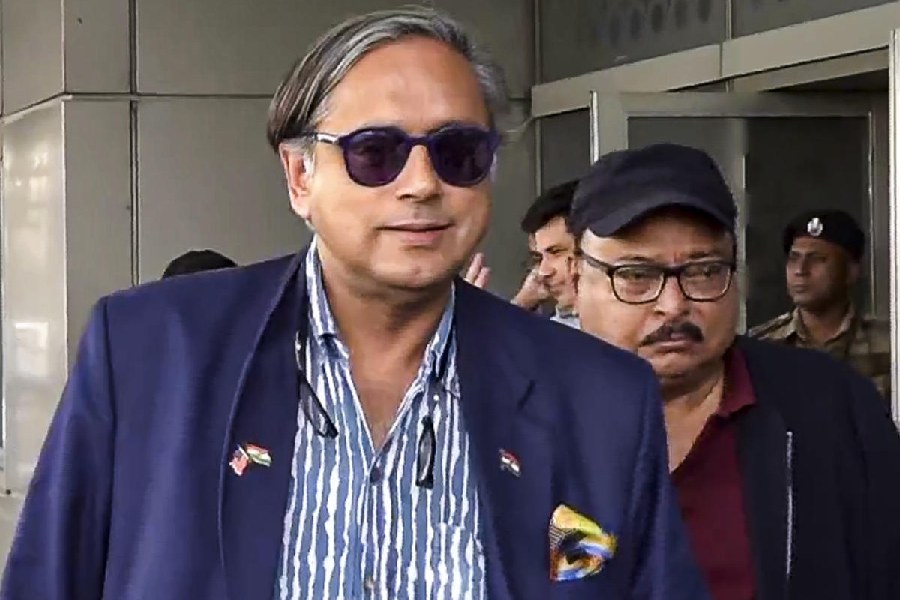 |
| The self-contained units of apartment blocks represent the new face of Calcutta, says Soumitra Das |
The self-contained units of apartment blocks represent the new face of Calcutta, says Soumitra Das
In the 1959 film The World, the Flesh and the Devil (which I saw recently on TCM), set in a deserted New York in a post-apocalyptic world, a strikingly handsome Harry Belafonte finds himself hemmed in by skyscrapers that tower over him like cliffs beetling over the lifeless streets. I too felt like a worm as I approached the cluster of four (a fifth is under construction) towers of South City, each standing 35 storeys high — impenetrable walls of concrete blocking out the sky from my vision.
Mumbai may be quite used to its Lokhandwala Complex, but in this city such dizzy heights are still a novelty, although in a neighbourhood as congested as the Prince Anwar Shah Road-Jadavpur area, quite a few multi-storeyed apartment blocks have reared their heads of late, not to speak of the ones that are sprouting almost daily anywhere between Sodepur and Baruipur. As in any gated community, the securitymen demanded which flat I wanted to visit, and tut-tutted a maid (she was obviously so in her bedraggled sari riding well above her ankles) who was trying to sneak out, perhaps without her ID card.
Plastic flowers grew in the lobby, at the end of which was the plaster figure of a muscle-bound male who looked uncannily familiar. When I was walking out of Tower 1, I realised it was a copy of Michelangelo’s David, only discreetly draped. The lift skyrocketed silently to the top floor. Washing hanging out of one of the windows of a flat on the 34th floor caught my eye.
Anita Gopal is an artist born of mixed parentage, whose “look” is an outstanding creation. She lives both in London and Calcutta. She moved into her seventh-floor flat in South City about three years ago, but before that she had already tasted life in both “posh” Alipore in a bungalow with a garden, and Diamond Enclave in Behala, which she thought was deplorably dirty and noisy. She has made herself at home in South City, but here too she has not been able to escape the noise of construction (“hammering, banging, drilling”), and that of rowdy festivity, be it Holi or Durga Puja or a rock band, which once forced her to flee to London.
Besides this, she is all praise. She says “the flats are nice, security excellent, maintenance very efficient and shopping easy (thanks to the adjoining mall)”, a statement that encapsulates all the advantages of living in a flat, as opposed to a private house in which people used to live before promoters “flat-ened” them. People may have been “transplanted” here from all over the country and the world, and this small township may be “international” in its ways, but unlike the West, where family life has all but disappeared, young Indians are still very family-oriented, opines Gopal.
It is not as if flats attract the young alone, but these self-contained units certainly represent the new face of Calcutta. Young professionals flush with new money — there are hundreds of them who live in flats in Calcutta itself or are undeterred by Rajarhat’s wilderness — inhabit a brave new world where memories and history are not so important.
Cookie-cutter flats — easy to adapt oneself to, service, maintain and abandon — were made-to-order for the new class. They truly belong to a borderless world, and by virtue of their youth, do not carry either the baggage of nostalgia or memories.
Shawan Sarkar lives in the same tower of South City as Gopal, but her flat being on a different side of the structure (hence peaceful), one has to take another lift to reach it. It has its mandatory cabinet with a faux Victorian statuette, and on a sprawling sofa her little son wants chocolate ice cream. A placatory offer of Choco Pie doesn’t help. The sofa is placed close to the tiny verandah and behind it is a dining table on which is placed a copy of Twilight. A kitchen with a hood extends to the wall where the flat ends.
Shawan, in her early 30s like her husband Debajyoti Roy, wears a skirt and her speech is a medley of English and Bengali. She admits that though her father still shares a house in Bapujinagar with his two brothers, she has lived mostly in south India, and after marriage, they moved to New Jersey. However, both she and Debajyoti, who is from Durgapur, studied engineering at Jadavpur University.
South City’s proximity to his alma mater (“I know this area well”) went in its favour when Debajyoti, who works out of home for an American bank (one of his several mobile phones is tinted with Holi colours), was shopping for a flat. They love it here as they can socialise without moving out of this “safe cocoon”, keep in touch with relatives, listen to music — rock being the favoured form — with friends, and celebrate traditional festivals such as Durga Puja or Holi with gusto.
Even elderly people grudgingly admit the advantages of living in flats. A few years ago, Kalyan Kumar Ghosh, who is on the wrong side of 60, had to leave the large house in Arpuli Lane in which his family had lived since 1952, and move to a block of flats close to Satgachhi. His family is originally from Burdwan and they moved to Calcutta in 1920-22 to start a garment business. In those early days they lived in a joint family of about 18 members, and at times had to accommodate visitors from their village as well.
He says the old College Street para was like an extended family, and it was all right for a child, who had lost a cricket ball, to look for it under a neighbour’s bed. So when they moved to Dum Dum, in the beginning it was unbearable. While he complains that “Here there is nobody to share your joys and sorrows with. Their salaries have shot up and they think no end of themselves”, in the same breath he admits he can go out anytime he wishes after locking the flat, and there is no question of looking after the house himself for residents share work.
Joyoti Chaliha, who is with a communications agency, and her parents, had to abandon their spacious house in Sunny Park for they found it impossible to maintain their establishment. The first cracks appeared in the building when Birla Mandir was coming up, and when Sunny Tower was being constructed, their 1930s house tilted both north and southwards. So while maintaining that there is “nothing like living in an old house”, she admits life is easier in a flat particularly with elderly people, and Calcutta has a “negative demography” with its preponderance of senior citizens.
Mira Bose had recounted in her memoirs how her grandfather used to rent an entire house when he came down to Calcutta from his zamindari in the districts to find a match for his daughter. In those days, those who lived in rented rooms were looked down upon, although huge apartment blocks already existed in the cosmopolitan Park Street, Chowringhee area, home to middle-rung European executives (Alipore and its bungalows for the top brass), Jews, Armenians, Anglo-Indians and Parsis.
The first wave of flat construction began in the 1970s, and by the 1990s, the developer class had emerged, says urban historian Debasis Bose. Many beleaguered Bengali families looked upon them as a blessing as they “rescued” litigated property and both tenants and landlords were gainers. The “promoters” made their projects viable by selling flats. The trend has gone viral now and flats are the future.
As uniformly ugly tenements gobble up old neighbourhoods and buildings, Calcutta is fast losing its charmed spaces. But as Ganesh Pyne, whose art matured in such a charged ambience, says: “These young people were born and raised in flats. The have nothing to lose. It is wrong even to talk about it.” This was inevitable.
What do you think is the biggest difference between life in an apartment and that in a house? Tell ttmetro@abpmail.com










